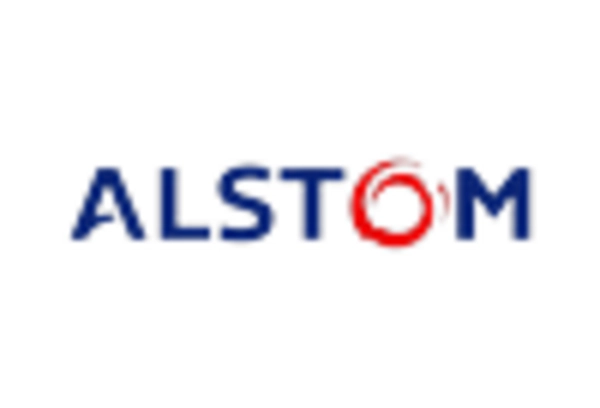Government Initiatives and Funding
Government initiatives aimed at improving public transportation infrastructure are significantly influencing the Passenger Information System Market. Various governments are investing in modernizing transport systems, which includes the deployment of advanced passenger information systems. For instance, funding programs have been established to support the integration of technology in public transport, enhancing operational efficiency and passenger experience. Reports indicate that public sector investments in transportation technology are expected to reach billions in the coming years. This financial backing not only facilitates the development of innovative solutions but also encourages collaboration between public and private sectors, thereby fostering a conducive environment for market growth.
Increased Focus on Safety and Security
The heightened emphasis on safety and security in transportation systems is a crucial driver for the Passenger Information System Market. As concerns regarding passenger safety continue to rise, transport operators are increasingly adopting systems that provide real-time alerts and information regarding safety protocols. This trend is particularly evident in urban transit systems, where the integration of safety features into passenger information systems is becoming essential. Data suggests that investments in safety-related technologies are expected to increase, with a significant portion allocated to enhancing passenger information systems. This focus on safety not only improves passenger confidence but also drives the demand for more sophisticated information systems.
Rising Demand for Real-Time Information
The increasing expectation for real-time information among passengers is a primary driver in the Passenger Information System Market. Passengers now seek timely updates regarding schedules, delays, and other critical travel information. This demand has led to the implementation of advanced technologies such as mobile applications and digital displays. According to recent data, the market for real-time passenger information systems is projected to grow at a compound annual growth rate of approximately 12% over the next five years. This growth is indicative of the industry's response to consumer needs, as transport operators strive to enhance service delivery and customer satisfaction. Consequently, the integration of real-time data into passenger information systems is becoming a standard practice, thereby driving market expansion.
Technological Advancements in Communication
Technological advancements in communication technologies are reshaping the Passenger Information System Market. Innovations such as 5G connectivity and the Internet of Things (IoT) are enabling more efficient data transmission and real-time updates. These technologies facilitate seamless communication between transport operators and passengers, enhancing the overall travel experience. The integration of IoT devices into passenger information systems allows for the collection and analysis of vast amounts of data, leading to improved service delivery. Market analysis indicates that the adoption of these technologies is likely to accelerate, as transport operators seek to leverage the benefits of enhanced connectivity and data analytics.
Growing Urbanization and Population Mobility
The trend of growing urbanization and increased population mobility is a significant driver in the Passenger Information System Market. As urban areas expand and populations rise, the demand for efficient public transportation systems becomes more pronounced. This necessitates the implementation of advanced passenger information systems that can manage the complexities of urban transit. Data indicates that urban populations are expected to increase by over 60% by 2030, leading to a surge in public transport usage. Consequently, transport authorities are investing in passenger information systems to accommodate this growth, ensuring that they can provide timely and accurate information to a larger number of passengers.

















Leave a Comment